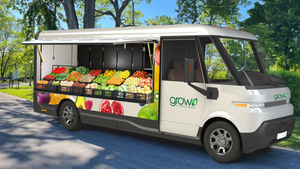Still stinging from rising restaurant prices, consumers stay (and eat) at home
The typical away-from-home eating occasion still costs 3.4 times more than in-home food sourced from retail, new data shows

TOP TAKEAWAYS
At-home food (8.7% sales growth versus year ago) is outpacing away-from-home food (6% versus year ago)
While inflation is more moderate for food away-from-home (7.1% versus year ago) compared to food at-home (10.3% versus year ago), away-from-home food still costs 3.4 times more than at-home food)
Up to 20% of U.S. workers work from home, which keeps 62.5% of the food dollar based on retail at-home sales, while 37.5% is based on away-from-home sales
Dwindling sales and declining foot traffic for restaurants are translating to a boost for supermarkets, with consumers who increasingly turn to bargain grocery shopping and eating more meals at home, according to new data.
Despite the fact that inflation is more moderate for food away-from-home (7.6% versus a year ago) compared to food-at-home (13.1% versus a year ago), the typical away-from-home eating occasion still costs 3.4 times more than in-home food sourced from retail, according to data from recently-merged companies Information Resources, Inc. and The NPD Group. The result, according to the data, is more people choosing to grocery shop and make meals at home.
But even with that pivot towards more at-home meals, inflation is still causing consumers to be more mindful of spending on groceries, which translates to many buying fewer non-essential items on the food aisle, or for many more, buying only the essentials.
The nearly $1.5 trillion at- and away-from-home food market is forecast to grow around 8% in 2022, with at-home food (8.7% sales growth versus a year ago) outpacing away-from-home (6% versus a year ago), according to the research.
Other key findings include:
Hybrid and flexible work schedules allow some 20 million U.S. workers to work from home, which keeps the substantial majority – 62.5% – of the food dollar based on retail at-home sales, while 37.5% represents foodservice spending
Consumers are bargain hunting, preferring more mainstream and value brands over premium brands, choosing private label foods in select categories and occasionally buying premium products as affordable luxuries
Consumers are migrating to more at-home food to offset rising costs, as noted by the deceleration in foodservice traffic, down 3% in July. Even when dining out, consumers trade down to more value foodservice outlets, like quick service restaurants, as evidenced by the growth in average customer check versus menu prices
Market bifurcation intensifies as higher-income households prefer premium products and lower-income shoppers prefer mainstream and value products. More growth is driven by higher-income households, as lower-income households are more economically challenged
“Even with the impact of elevated grocery prices, dining out is still much more expensive than eating at home,” said David Portalatin, senior vice president and industry advisor for Food and Foodservice for The NPD Group. “As we head into 2023, restaurant recovery will be slow and steady, as traffic begins to return to pre-pandemic levels.”
About the Author
You May Also Like






